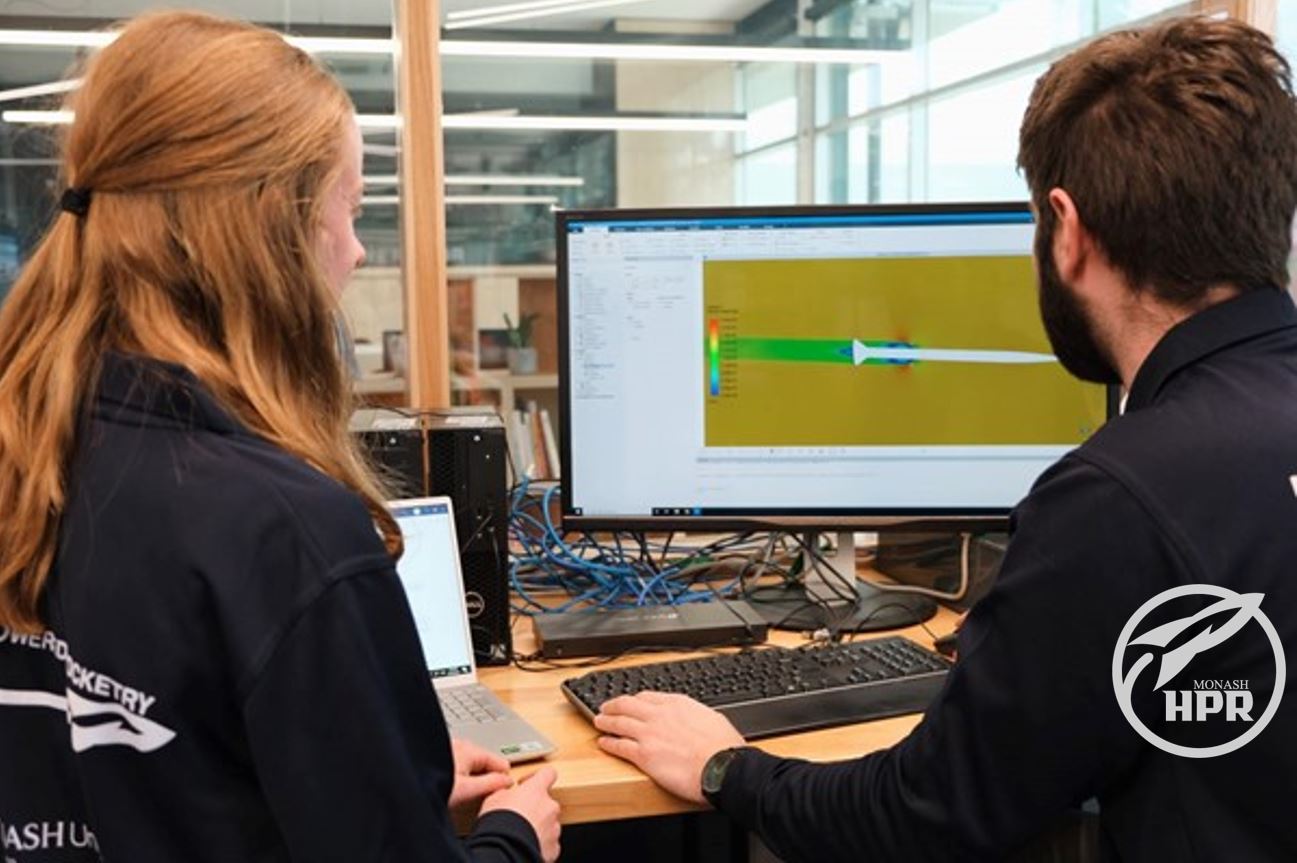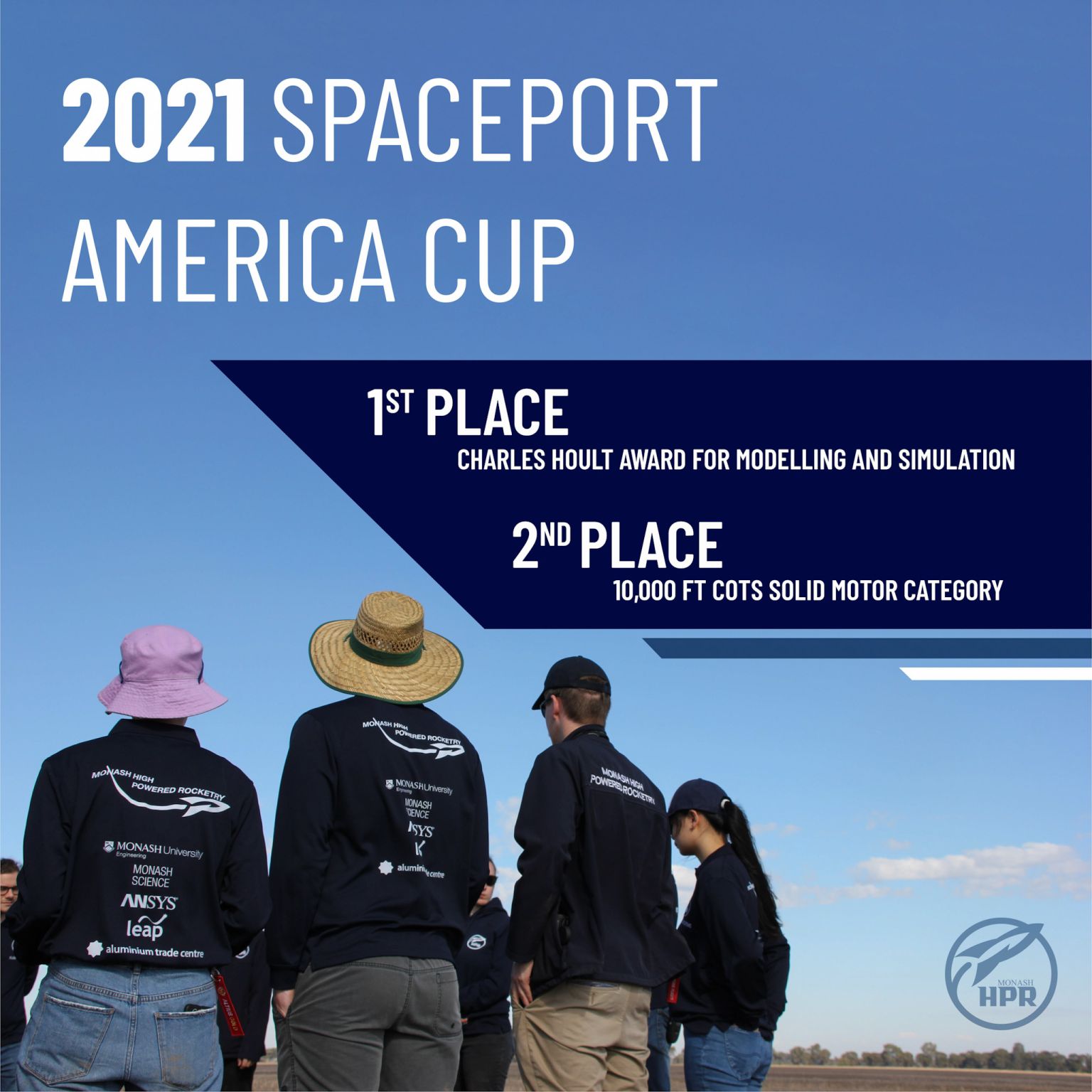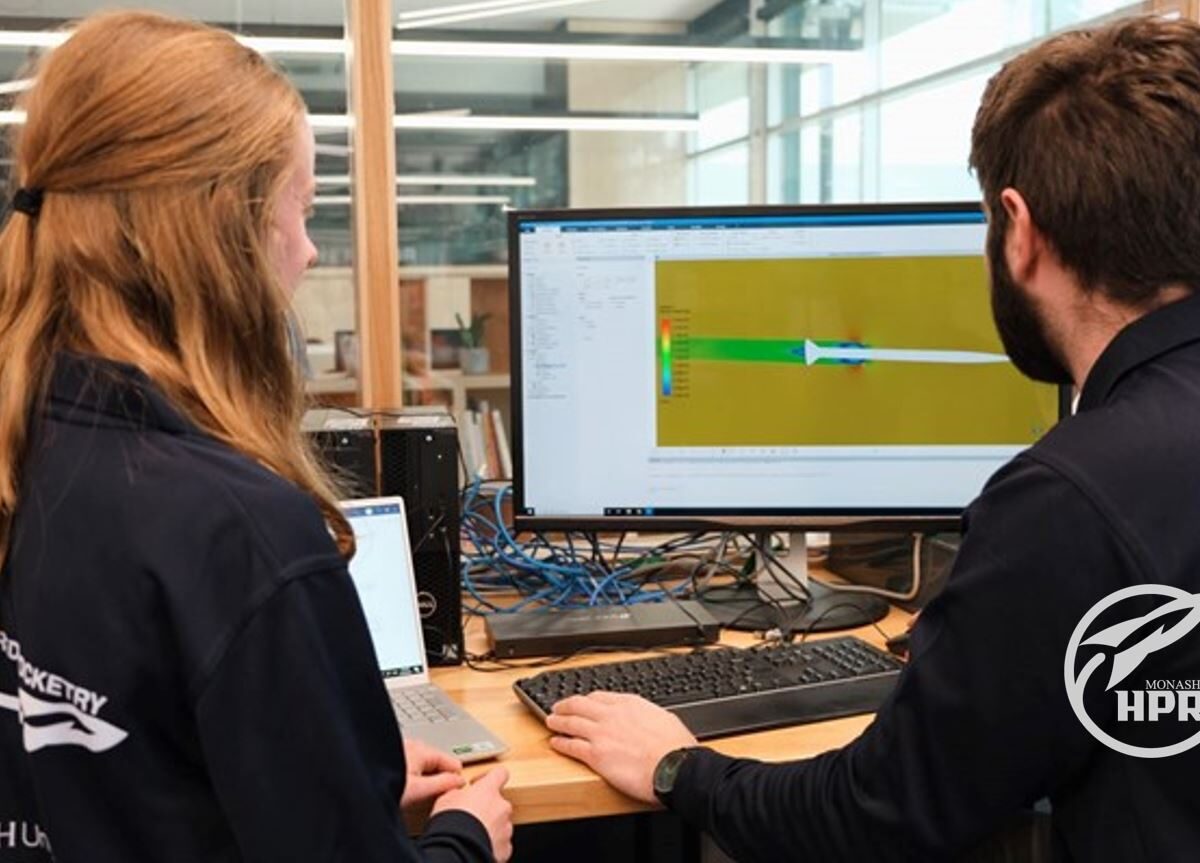
In the early hours of a cold Melbourne Monday morning in June, members of student team Monash HPR (High Powered Rocketry) gathered online in a group call to hear the outcome of a two year endeavour.
Formed in 2018, Monash HPR design, build and fly sounding rockets, with the goal of turning students into the engineers that Australia’s growing space sector will need. Launching Scientific Payloads as high as 30,000ft, the team competes in the Australian Universities Rocket Competition, and were on track last year to travel to New Mexico to compete in the world’s largest intercollegiate rocketry competition – the Spaceport America cup. As with many pursuits in 2020, the competition was cancelled, but took place in 2021 as a virtual event.
With a heavy emphasis on Analysis and technical reporting, the competition presented as more of a conference on aerospace engineering – a great opportunity to connect with like minded students from around the world, and to share the work of Monash HPR with representatives from America’s thriving space industry. Of 75 teams, 25 were selected to present specialised podium sessions on various topics – including “Team 55 – Monash HPR”.

With a presentation entitled “Detailed and Extensive Trajectory and Sensitivity Analysis through Monte Carlo Simulations”, the HPR dynamics team showcased SATURN, their custom 6 degrees of freedom simulator. Taking inputs from ANSYS Fluent CFD runs, SATURN simulates the trajectory of HPR rockets, and is a useful design tool.

Thanks to LEAP Australia, the entire lifecycle of a rocket, from design to launch is easily managed. Parts are created by design engineers in CREO Parametric, then pre-processed for CFD by the dynamics team. Using Windchill PLM software allows any member of the team to easily access parts, whilst ensuring strong version control – this has been critical through the enforced isolation of the pandemic. CFD on parts is completed in ANSYS Fluent, including thorough mesh convergence studies. SATURN uses outputs from Fluent such as aerodynamic drag to inform operational decisions up until and after the launch of the rocket.
Whilst yet to launch, Monash HPR’s rocket Icarus achieved second place in its category at the 2021 Virtual Spaceport America Cup – coming within 2 points (out of a possible 1000) of winning the category - a feat the team is incredibly proud of. Of even greater note was the acknowledgement of the quality of the simulation work done by the team, with Monash HPR achieving first place in the Charles Hoult Award for Modelling and Simulation (to add to winning the Shoal Simulation and Modelling Award at AURC 2020). Competition official Bill Hanson commended the work of the team as “one of the most sound and thorough analyses I’ve seen”.


One challenge the team faced was in the design of a cutting-edge aerobraking system. To accurately hit the 10,000 ft target altitude accurately, Icarus will deploy drag inducing flaps into the oncoming airflow. Extensive CFD runs calculate the drag for various flight conditions and airbrake angles, the outputs of which go to a lookup table that guides the angle of the airbrakes throughout their operating regime. Project Manager James MacKinnon said “the novel air brake system has presented itself as a complex challenge to simulate both aerodynamically and mechanically. The CFD and FEA capabilities of ANSYS software has allowed us to accurately simulate the performance of the system and ensure safe operation of the rocket under air braking.”

Monash HPR’s presentations are set to become available on the Experimental Sounding Rocket Association youtube channel in the coming weeks. After placing second in one category and fifth overall in the competition, Monash HPR team members are also keen to travel to America in person next year to compete again, with team lead Isaac Sims saying “Attending Spaceport gives our members the opportunity to showcase the technical skill available down under. This year we’ve proven how effective our simulations are, and we intend to validate them with a strong showing at next years cup”






